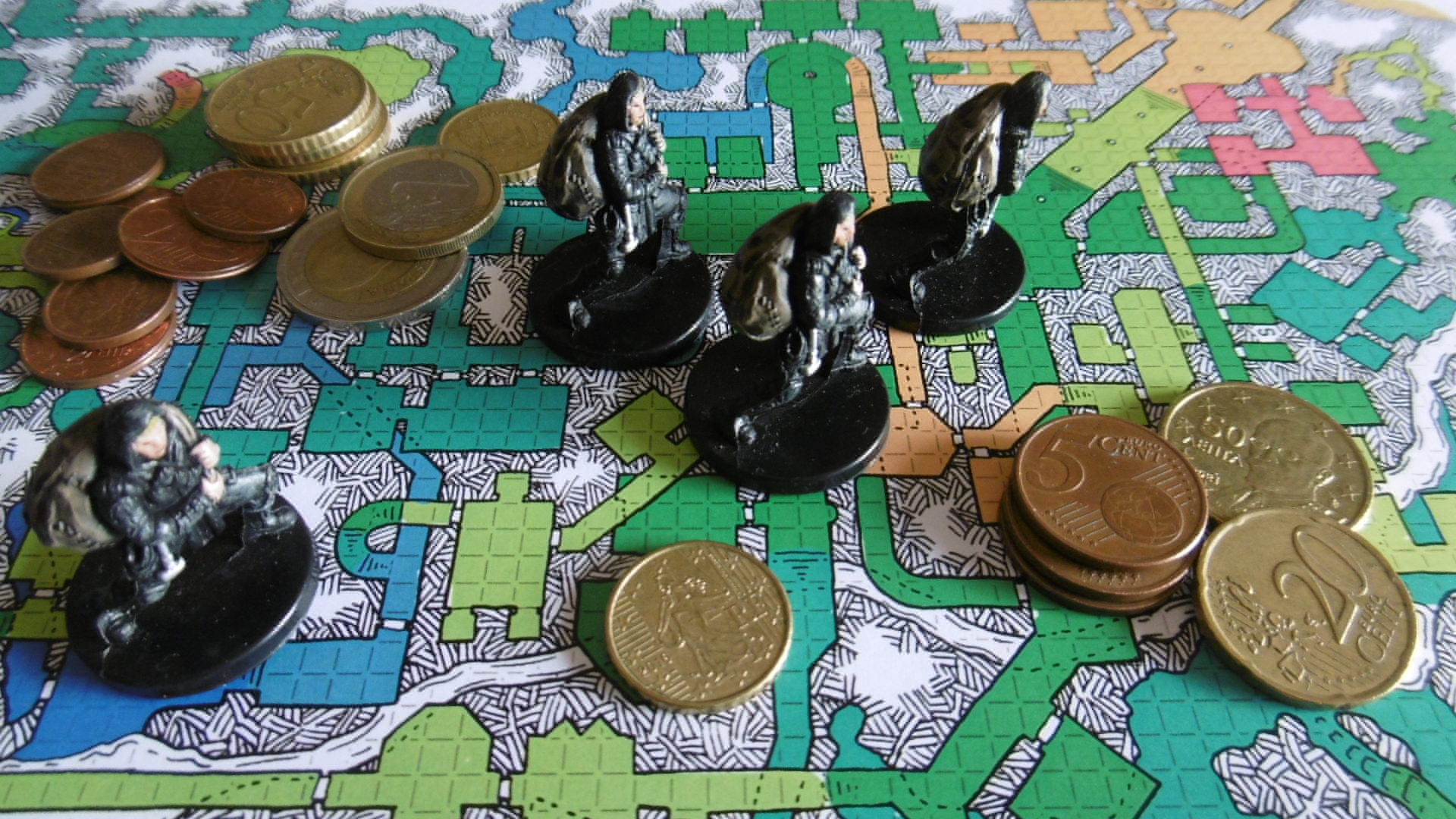“…for 300 gold pieces are assumed to weigh about 30 pounds” (Holmes, 9).
Melqart raised the torch over his head. Flickering light glinted off gold and silver. An alabaster frieze decorated the far wall. Before it, coins spilled from coffers, chests, and brass urns. A gold chain adorned with precious stones sparkled red and green.
Melqart drew a breath. “How many rounds1 you reckon, Hathor?”
Hathor-Ra stood, shield lowered, mace pointing down, mouth agape.
“Hathor?”
She blinked at the dazzling mound. “Thousands and thousands!”
“How many sacks do we have?”
“Three large, one small… and I’ve got room in my backpack.”
In early D&D editions, the base unit to measure encumbrance is the “coin,” and ten of them weigh one pound. I struggled with that idea for a long time. Even if we assume that encumbrance is “a combination of weight and bulk,” as Tom Moldvay puts it (B20), a one-tenth-pound coin seems hardly credible. Eventually, I came around to accept the absurdity in favor of playability.
Ten coins to a pound started as early as OD&D, in which the average man weighs 1,750 coins (Vol. 1, 15). That the entry tops the encumbrance list is either to set a benchmark—175 lbs. was average for a 1970s American male—or to remind us it’s a dangerous world: there are rules for carrying a comrade’s corpse.
The ten-coin standard continued through AD&D and the “Basic” line (B/X, BECM/I, and the Rules Cyclopedia). It was abandoned in 2nd Edition, which puts 50 coins in a pound.
The quote at top from the section on encumbrance in Holmes Basic D&D pulls the heavy coin forward from OD&D. But Zach Howard’s reading of the Holmes manuscript implies that it wasn’t the Editor who wrote the encumbrance section,2 but rather a subsequent editor.3
Elsewhere in Holmes we read:
“All coins are roughly equal in size and weight, being approximately the circumference and thickness of a quarter and weighing about twice as much” (34).
Reading Zach Howard’s discussion of the Treasure section in the Holmes manuscript, I see that Holmes didn’t write about the size and weight of coins either. [22:30 13 February 2022 GMT]
This gives us the idea that Holmes used, at least in his own game, a smaller value for the weight of a coin.4 A US quarter-dollar piece weighs 5.67 grams. Twice that, 11.34, is 0.025 pounds. Using this as the standard, there are 40 coins in a pound.
Do you know what that means? You can carry four times more treasure out of the dungeon. That’s four times more treasure! More treasure for you, more treasure for me—more treasure for everyone!

Adventurers carry 9,600 rounds in four large sacks.
Notes
1 A round, in adventurer jargon, is a precious-metal coin of any realm, past or present.
2 Zenopus Archives blog, “Part 6: ‘Fully Armored and Heavily Loaded’”
3 Howard suggests, with compelling evidence, Gary Gygax for the Editor’s editor: “Interlude: Who Edited the Editor?”
4 Written accounts from the Editor himself indicate that Holmes knew and used some rules from an early third-party OD&D supplement called Warlock. I wonder if a coin’s weight is addressed in those rules. Zenopus Archives blog, “Warlock or how to play D&D without playing D&D?”
Having now had the opportunity to read Warlock as printed in The Spartan #9 (August 1975), I can report that, other than that it weighs one unit, no mention of a coin’s weight is contained therein. Nor is any other of Holmes’s unique rules. [18:34 19 May 2022 GMT]
Pingback: Recalculating a Coin’s Weight – DONJON LANDS